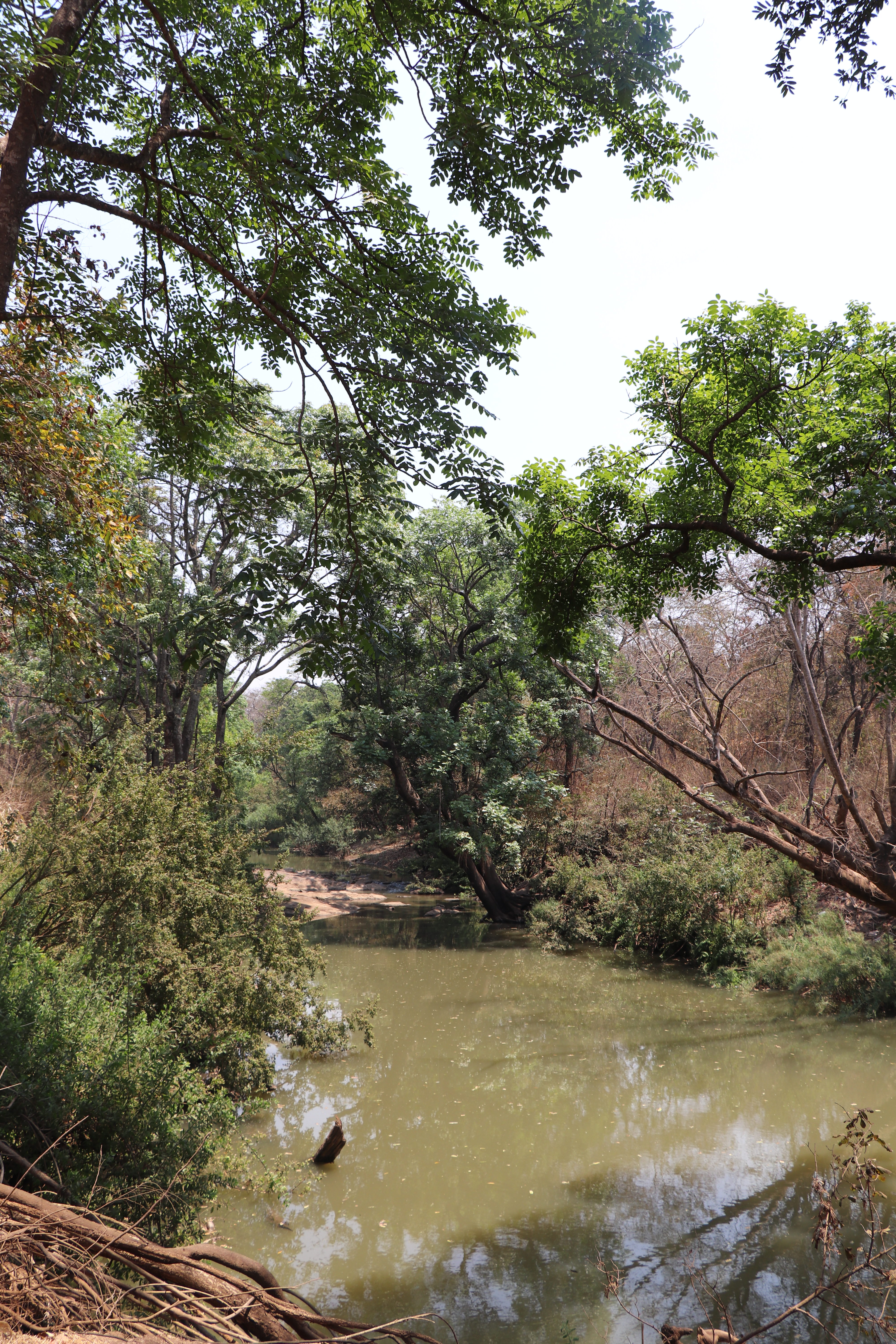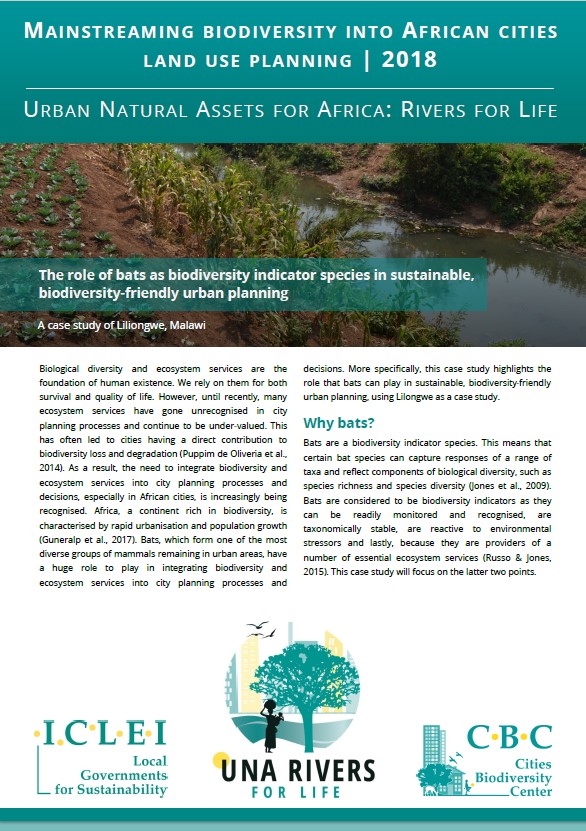Mainstreaming biodiversity into African cities




Download:
Related ICLEI Pathway(s)
About
Resource summary
Biological diversity and ecosystem services are the foundation of human existence. We rely on them for both survival and quality of life. However, until recently, many ecosystem services have gone unrecognised in city planning processes and continue to be under-valued. This has often led to cities having a direct contribution to biodiversity loss and degradation (Puppim de Oliveria et al., 2014). As a result, the need to integrate biodiversity and ecosystem services into city planning processes and decisions, especially in African cities, is increasingly being recognised. Africa, a continent rich in biodiversity, is characterised by rapid urbanisation and population growth (Guneralp et al., 2017). Bats, which form one of the most diverse groups of mammals remaining in urban areas, have a huge role to play in integrating biodiversity and ecosystem services into city planning processes and decisions. More specifically, this case study highlights the role that bats can play in sustainable, biodiversity-friendly urban planning, using Lilongwe as a case study.
Related resources

City of Johannesburg Goods and Services Assessment

Nature-Based Solutions for African Cities: The Human Rights-Based Approach



